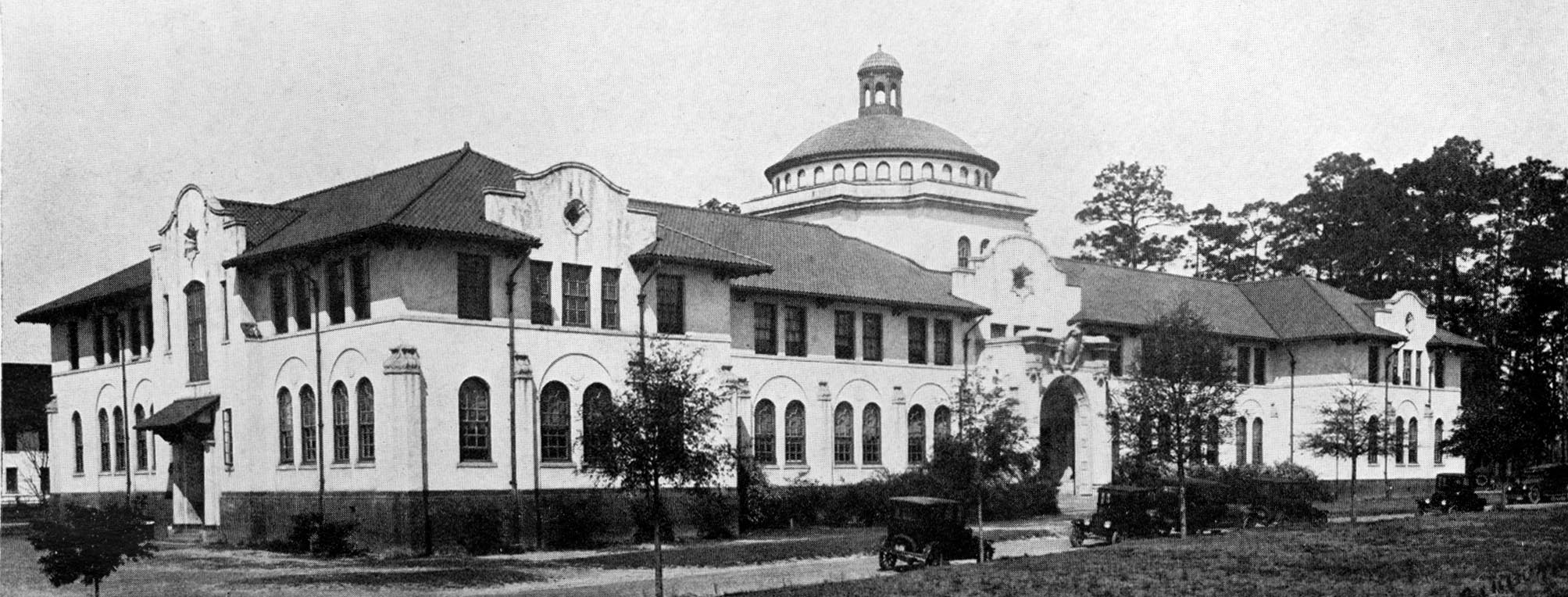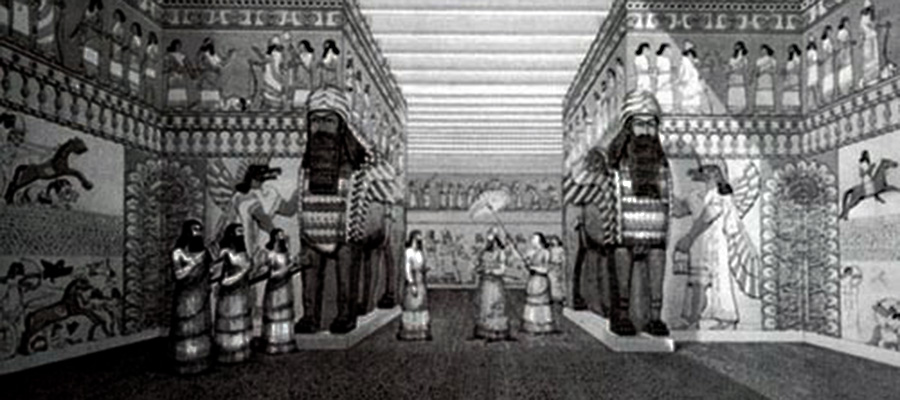Babylonian Clay Tablets
at South Georgia State Normal College1

From Babylon to Valdosta
Dr. Richard Holmes Powell, first president of South Georgia State Normal College (now Valdosta State University), acquired ten Babylonian clay tablets for the school's students to study. The tablets, which are roughly 1.5" square, are imprinted with Cuneiform writing and are indicative of daily record-keeping in ancient Mesopotamia. They were purchased in 1920 from archaeologist and antiquities dealer Edgar J. Banks at a total cost of $40. Banks provided translations for each tablet, along with his personal guarantee regarding their authenticity.
Local legend has it that Powell purchased or arranged for the purchase of the tablets while he was on leave from the college serving abroad in the Red Cross in 1918. However, no evidence has yet been found to substantiate that Powell's Red Cross service was even overseas, or as to the connection between him and Banks.
 Tablets 9 and 10
Tablets 9 and 10The tablets were wrapped in tissue paper and shipped in a wooden box. Tablets numbered one through eight are in excellent condition; however, tablet number nine has been reduced to fragments and dust, and tablet number ten is very worn and fragile. A penciled notation on the box top reads, "#10 sundried, in poor condition," and in his letter, Banks notes that, "The sun dried tablets are seldom well preserved." It is unknown as to how tablet number nine was destroyed; either by shipping or after coming to the college.
Edgar J. Banks was a lesser-known archaeologist and did much of his work in the early 20th century. In 1900, Banks applied for and eventually received permission from Ottoman authorities to dig in the modern-day city of Bismya, Iraq, site of the ancient City of Adab.

Edgar James Banks
Exhibit
The VSU Babylonian Clay Tablets are on permanent display in the Valdosta State University Archives and Special Collections, on the fourth floor of Odum Library
Mon-Thur, 8:30 - 5:00 -- Fri, 8:30 - 3:00
The thumbnail of each tablet is linked to a page with a complete front, back, and side view of the tablet, along with a translation by Banks himself, really more of a summary of where it was found and what it might contain. The tablets have been translated by Dr. Cale Johnson, cuneiform scholar of UCLA, and may be found in the Cuneiform Digital Library Bulletin. In addition to translations, the article will explain the significance of some of the tablet names or places. Further information on Banks' summary translations can be found in the correspondence below related to the tablets.

Transcript: Letter from Edgar Banks to President Powell April 30, 1920.
View Primary Source
Map of Valdosta Tablet Sites (Google Earth)
Tweet
Sources and Information
Information related to Ancient Mesopotamia during the time of the tablets has been compiled by Dr. Melanie Byrd. A map of major cities mentioned on the tablets, a timeline of Mesopotamian civilization and a bibliography of relatedresources are available.
For more information on Edgar Banks and his work and Cuneiform tablets in general, try the links below:
The Richard Holmes Powell Papers, 1895-1933
Edgar James Banks, Bismya or The Lost City of Adab New York : G. P. Putnam's Sons, 1912. Online version of Banks book.
The Cuneiform Digital Library Initiative
A joint project of the University of California, Los Angeles, and the Max Planck Institute for the History of Science, Berlin.
The Cuneiform Digital Palaeography Project
This Cuneiform database is a collaboration of the University of Birmingham in England and the British Museum. Presents a database of digital images of cuneiform tablets.
Map of the Fertile Crescent
Map of Valdosta Tablet Sites (Google Earth)Download KML file
ETANA: Electronic Tools and Ancient Near East Archives
South Dakota State University Archives
This is the site of the South Dakota State University Archives, and discusses their collection of Banks' tablets and how they were acquired, along with image scans of the tablets. Article on Banks and cuneiform tablets linked here: Crystal Gamradt. "Forgotten Past: Solving a Mystery of Forgotten Antiquities and Finding Their Significance to the Present."
Science Museum of Minnesota
Site for Science Museum of Minnesota, which has some of Banks' tablets. There is a link to an excellent article titled, "The Forgotten Indiana Jones" by Ewa Wasilewska, who is writing a biography on Banks. She is a researcher at the University of Utah, which also possesses some of Banks' tablets.
Cuneiform Inscriptions of the University of Minnesota
Site for the Cuneiform Inscriptions of the University of Minnesota; the University has some of Banks' tablets, and also provides interesting general information about Cuneiform writing and the cultures that used it. Links to articles about Banks as well.
Ancient Manuscripts at Nortre Dame
University of Notre Dame's "Ancient Manuscripts" site, which contains a good bit of information about cuneiform tablets.
University of Arizona - Bank's Cuneiform Tablets
"Your Android tablet out of date? Our tablets are 4000 years old! Some among the younger generations might be surprised to know that tablets existed long before Apple and Microsoft created the high-definition, flat-screened versions so ubiquitous today..."
Your Name in Cuneiform
"Write like a Babylonian. See your monogram in cuneiform, the way an ancient Babylonian might have written it." From the University of Pennsylvania Museum of Archaeology and Anthropology.
** Note to Researchers: If the scans provided of the tablets are not adequate for your study, or if you note problems in orientation of the tablets or with the translations, please contact us at dsdavis@valdosta.edu We will try to fix any mistakes.
The content of this website was created by Amy King and Deborah Davis of the VSU Archives, with assistance and inspiration from Dr. Melanie Byrd of the VSU History Department in 2000. The website was redesigned, December 2013, by Dallas A. Suttles of the VSU Archives. Partial support for this project came from the Georgia Historical Records Advisory Board, The Georgia Archives, Office of the Secretary of State. All images that are part of this online exhibit belong to the VSU Archives except for the picture of Edgar Banks. They were taken from the website of the Biblical Archeology Society website. [See Note to Researchers Above**]











